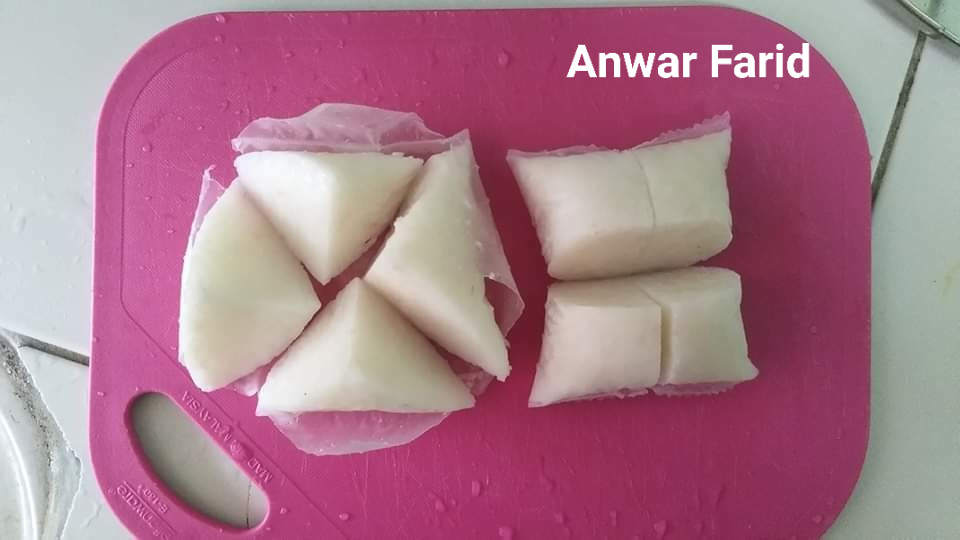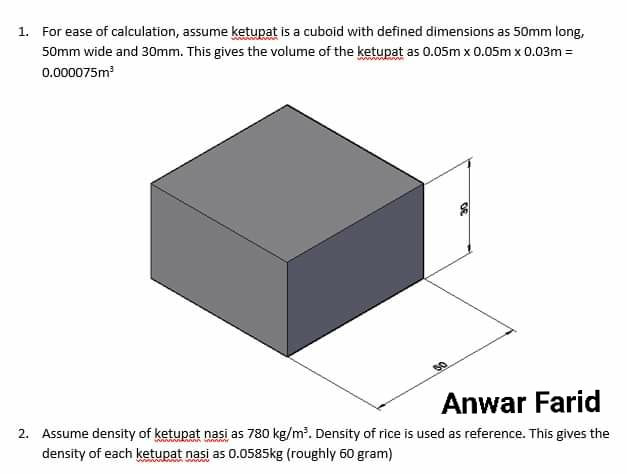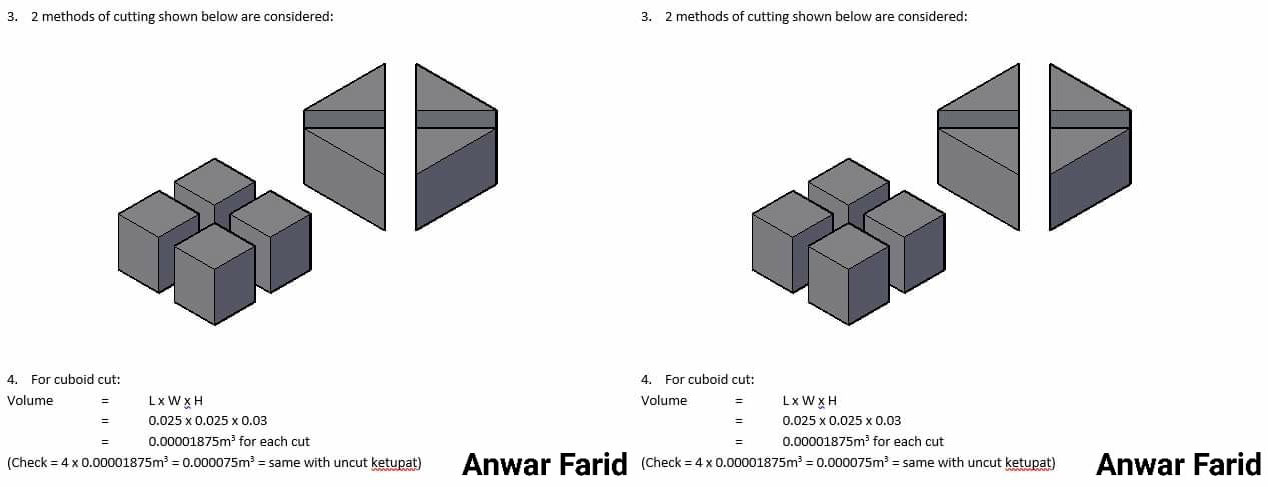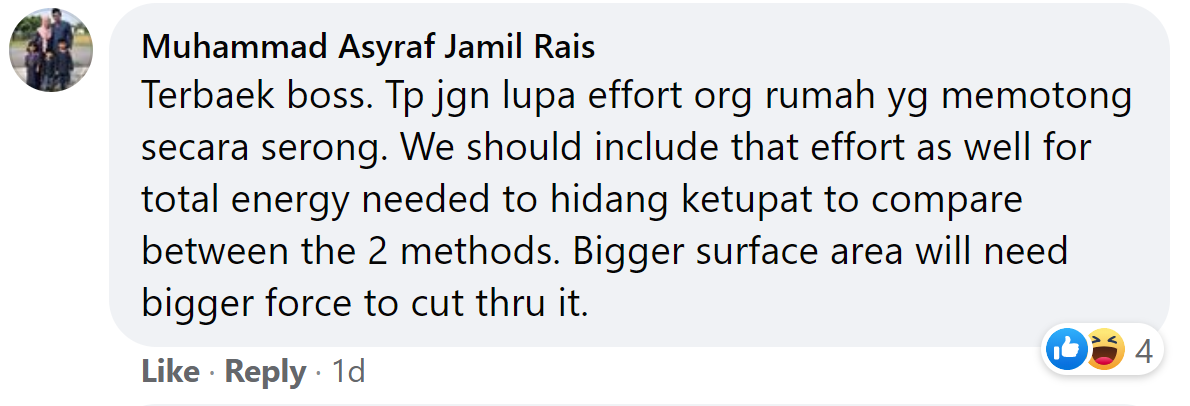Netizen Uses Maths To Explain Why Cutting 'Nasi Impit' Diagonally Is The Best Way
The result might shock you.
A netizen's post detailing the best way of cutting a plastic-wrapped nasi impit has gone viral on Facebook
"Nasi impit: should it be cut diagonally or straightly?" Anwar Farid asked the million dollar question in a Facebook post on the second day of Hari Raya, 25 May.
In the post, Anwar used various mathematical formulas to reach a conclusion. His objective was to calculate the surface area, volume, and density of the nasi impit cut in two different ways to understand what are the benefits of each method.
At the time of writing, Anwar's post has garnered over 6,600 shares and 1,200 comments.
Before the calculation, Anwar said cutting nasi impit diagonally makes it easier for the plastic wrapper to fall off
The first conclusion is based solely on observation after cutting the compressed cooked rice, which is normally served during Hari Raya along with rendang or satay sauce.
As he moved on to calculating the surface, he found that cutting nasi impit diagonally into four gives each piece a bigger surface area
For the casual eaters, you might wonder what is the use of knowing this piece of information.
However for Anwar, as well as many nasi impit connoisseurs, knowing this would mean understanding which method of cutting would allow each piece of nasi impit to hold more gravy or sauce so that each bite would be more flavourful.
Up until this point, 'Team Diagonal Cut' scored two points, while 'Team Straight Cut' scored none.
Next, Anwar moved on to calculating the volume and density of the nasi impit cut differently
"For ease of calculation, let's assume the ketupat (or nasi impit) is a cuboid with defined dimensions of 50mm long, 50mm wide, and 50mm high. This gives the volume of the ketupat as (sic) 0.05m x 0.05m x 0.03m = 0.000075m³," he wrote on a worksheet.
He then gives another hypothetical number on the nasi impit's density - 780kg/m³ or 0.0585kg/m³ for a roughly 60g serving.
After calculating over two worksheets, Anwar realised that the nasi impit gives the same volume and density regardless of how it is sliced.
All four sets of calculation arrived at the same results respectively, concluding that whichever way you cut gives the same mouthful bite.
In his "findings and conclusions", Anwar wrote:
a) Both methods of cutting theoretically produce the same volume of nasi impit.
b) It's easier to remove the plastic wrapper when cutting diagonally instead of cutting straightly.
What he fails to reiterate from the first calculation is that:
c) Diagonally-cut nasi impit has a bigger surface area so that it can be covered with more rendang gravy or satay sauce.
This makes diagonally-cut nasi impit a clear winner with the score 2-0.
Many netizens thought of Anwar's elaborated explanation as a hilarious response to the longstanding trivial debate in every household, while some Malaysians greatly appreciated his scientific reasonings
"Adooii. Eating also need to stress about it," a netizen said in jest.
Another Facebook user commented that he does not care how it is cut as long as he gets to eat it.
Meanwhile, a person applauded Anwar's calculation, saying, "Terrific work, boss. However, don't forget the people who cut the nasi impit diagonally for us at home."
"We should include that effort as well for the total energy needed to cut nasi impit in two different methods. Bigger surface area requires a bigger force to cut through it," he reminded.







